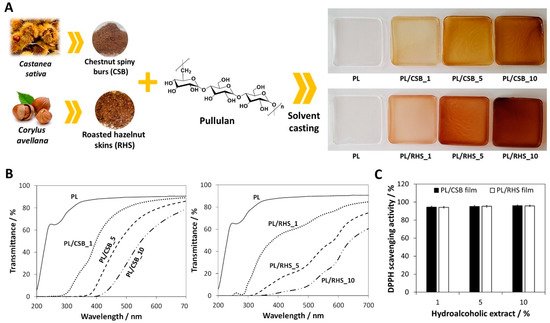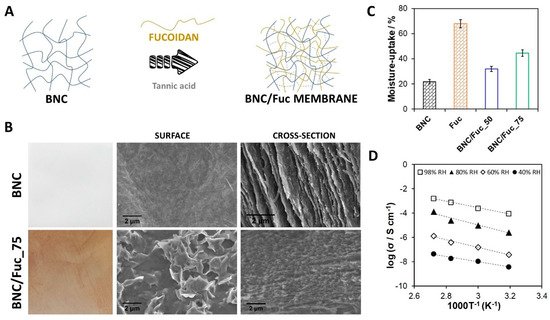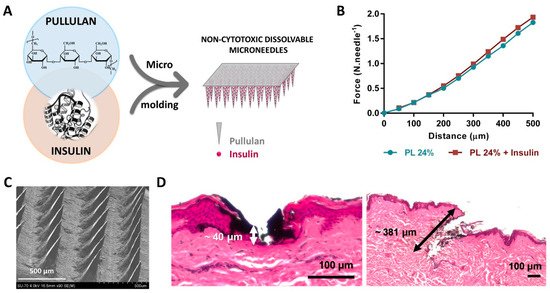Natural polymers have emerged as promising candidates for the sustainable development of materials in areas ranging from food packaging and biomedicine to energy storage and electronics.
1. Introduction
Natural polymers, such as polysaccharides, proteins, and nucleic acids, are components of biological systems responsible for performing a wide range of essential functions
[1]. For instance, certain natural polymers play a key role in the maintenance of the structural integrity of cells in plants and animals (e.g., cellulose
[2] and chitin
[3]), while others offer biological protection against surrounding environments (e.g., lysozyme
[4]). The diversity in terms of provenance and composition provides these natural polymers with distinct physicochemical and biological properties that can be of interest in various fields
[5][6][5,6]. In fact, natural polymers and their derivatives already find application in numerous sectors, e.g., in the manufacture of paper goods
[7] and textiles
[8], as additives in food products
[9][10][11][9,10,11], in the formulation of nutraceuticals and functional foods
[12], and in the biomedical field (e.g., in cosmetic treatments
[13] and drug delivery
[14][15][14,15]). Owing to the natural abundance, renewability, and intrinsically negative carbon footprint of polymers derived from renewable resources
[16], their exploitation is favourable and can play a pivotal role in the development of advanced materials in the shape of films
[17][18][17,18], membranes
[19][20][19,20], coatings
[21][22][21,22], hydrogels
[23], and micro- and nanoparticle systems
[24][25][26][24,25,26].
2. Applications of Natural Polymers-Based Materials
2.1. Natural Polymers-Based Films for Active Food Packaging
Biopolymeric films for active food packaging are mostly based on nanocelluloses (bacterial nanocellulose (BNC)
[27][123] and cellulose nanofibrils (CNFs)
[28][29][88,89]) or other film-forming polymeric matrices (e.g., pullulan
[30][31][32][74,75,130], chitosan
[33][90] and agar
[34][82]), and are typically loaded with additives with a vast array of functions
[35][36][62,109], including active components with innate antimicrobial and antioxidant properties, such as silver nanoparticles
[32][130], bioactive ionic liquids
[30][74], lysozyme nanofibrils (LNFs)
[37][38][108,131], and natural extracts
[31][34][28][29][33][75,82,88,89,90]. As an illustrative example, Esposito et al.
[31][75] exploited hydroalcoholic extracts from chestnut spiny burs and roasted hazelnut skins, obtained from industrial processes, to prepare homogeneous pullulan (PL) films (
Figure 14A). The films revealed good mechanical and UV-barrier properties (
Figure 14B), allied with high antioxidant activity (ca. 94%, DPPH scavenging activity,
Figure 14C), underlining their potential for active food packaging applications. Regarding the topic of active packaging, it is also worth mentioning the recent trends in the design of intelligent packaging options
[35][36][62,109], which can provide dynamic feedback concerning the condition of packaged food, e.g., monitorization of food humidity levels
[27][123].
Figure 14. (
A) Schematic illustration of the incorporation of hydroalcoholic extracts from chestnut spiny burs (CSB) and roasted hazelnut skins (RHS) in a pullulan (PL) matrix via a solvent casting technique and photographs of the prepared films. UV–vis spectra (
B) and antioxidant activity (
C) of the PL, PL/CSB, and PL/RHS-based films. Reproduced with permission from
[31][75]. Copyright Elsevier, 2020.
2.2. Natural Polymers-Based Ion Exchange Membranes for Fuel Cells
Nanoscale forms of cellulose have garnered great attention for the design of polymer electrolyte fuel cell (PEFC) components, as recently reviewed by Vilela et al. [39][60]. In particular, BNC-based materials have been studied for the development of sustainable substitutes of ion-exchange membranes. The lack of intrinsic ionic conductivity of BNC can be surpassed with the introduction of ion-conducting phases in the cellulose nanofibrillar structure [39][60]. In this sense, BNC has been combined with synthetic polyelectrolytes, such as NafionTM [40][116], poly(4-styrene sulfonic acid) [41][42][43][94,114,115], phosphate bearing monomers [44][45][93,117], and poly(ionic liquids) [46][118], to create partially biobased separators. Particularly relevant is the partnership between BNC and natural polyelectrolytes [47][48][81,95] for the design of mechanically and thermally robust fully biobased polymer electrolyte membranes (PEMs). Fucoidan and BNC membranes [47][81] are examples of these materials, prepared via the simple diffusion of aqueous fucoidan solutions into the exopolysaccharide network and subsequent thermal cross-linking with a natural agent, viz. tannic acid (Figure 25A). Micrographs of the surface and cross-section of the membranes disclosed the well-dispersed sulfate moieties of the algal polysaccharide in the BNC network (Figure 25B). The nanocomposite revealed good dynamic mechanical performance (storage modulus ≥ 460 MPa) and thermal-oxidative stability (180–200 °C) in both inert and oxidative atmospheres. Moreover, this fully biobased ion-exchange membrane displayed good moisture-uptake capacity (Figure 25C) and protonic conductivity, with a maximum of 1.6 mS cm−1 measured at 94 °C and 98% relative humidity conditions (Figure 25D). In general, fully biobased membranes display lower ionic conductivity (when compared with partially biobased counterparts) associated with a smaller content of moieties that enable ion motion. Nevertheless, the fabrication methodologies are simpler, and the resulting materials are entirely environmentally friendly.
Figure 25. (
A) Schematic illustration of the preparation of fully biobased bacterial nanocellulose (BNC) and fucoidan (Fuc) membranes with tannic acid as a crosslinker. (
B) Photographs and micrographs of the nanocellulose surface and cross-section before (BNC) and after (BNC/Fuc_75) inclusion of the sulfated polysaccharide (Fuc) (scale bar: 2 µm). (
C) Moisture uptake capacity of the membranes. (
D) Arrhenius-type plot of the through-plane protonic conductivity of the BNC/Fuc_75 membrane. Reproduced with permission from
[47][81]. Copyright Elsevier, 2020.
2.3. Natural Polymers-Based Patches for Drug Delivery and Wound Healing
Works of BNC [49][79] and CNFs-based patches [50][86] have been described as alternatives to non-biodegradable synthetic materials for cutaneous wound healing applications. Aside from the physical protection granted by these systems, the incorporation of antimicrobial agents (e.g., LNFs [50][86]) or active pharmaceutical ingredients that stimulate cell proliferation (e.g., dexpanthenol [49][79]) within the patches prevents skin infections and promotes wound closure. In terms of drug-delivery options, nanocellulose patches offer the possibility of self-administering therapeutic molecules using oral, buccal, sublingual, and transdermal routes, which can significantly improve drug bioavailability and minimize side effects by avoiding the first-pass effect on metabolically active tissues of the body [51][134].
2.4. Natural Polymers-Based Microneedles for Drug Delivery and Fluid Uptake
Microneedles (MNs) have risen as an efficient, minimally invasive, and painless method for transdermal delivery of an assortment of drugs and bioactive compounds
[52][107]. In this field, we report the fabrication of pullulan MNs for the transdermal delivery of insulin
[53][76] (
Figure 37A) and hyaluronic acid MNs with a BNC backing layer for the delivery of rutin
[54][77], using a micromolding technique. In both cases, the casting of the polymeric solutions resulted in needles with good mechanical performance (
Figure 37B), able to meet the force threshold required for skin insertion (≈0.15 N.needle
−1). Moreover, penetration studies using both a skin model and human skin (in vitro) proved the ability of the microneedles to successfully perforate the outmost layer of the skin, i.e., the
stratum corneum, and create pathways across the skin without reaching the nerves (
Figure 37C,D).
Figure 37. (
A) Schematic illustration of the production of insulin-loaded pullulan microneedles. (
B) Force–displacement curves of neat (PL 24%) and drug-loaded (PL 24% + insulin) microneedles. (
C) SEM micrograph (scale bar: 500 μm) and (
D) histological cross-sections of human abdominal skin after insertion of the pullulan microneedle patch with insulin. Reproduced with permission from
[53][76]. Copyright Elsevier, 2020.
Microneedle patches can also be designed for interstitial skin fluid uptake, which is rich in biomarkers of clinical relevance
[52][107]. Fonseca et al.
[55][87] took advantage of the swelling ability of a gelatin derivative to produce MNs capable of extracting urea, a metabolite of great importance for the management of kidney diseases. When exposed to ex vivo human abdominal skin, a single patch was able to extract 3.0 ± 0.7 mg of fluid. Overall, microneedle systems are associated with quicker diagnosis, the onset of therapeutics, and less pain and discomfort, which can be of significance for low-compliant patients such as the elderly
[52][107].
2.5. Natural Polymers-Based Materials for Other Applications
In addition to the examples listed above, our group has also been exploiting natural polymers for several other emerging fields of application, ranging from electronics to environmental remediation. For example, the formulation of biopolymeric chitosan coatings loaded with corrosion inhibitors
[56][57][58][73,102,103] was adopted for the protection of metallic substrates in corrosive environments. In a different approach, flexible electroconductive substrates with potential application in electronic devices, energy storage, or sensors were devised through the inclusion of copper nanowires
[59][111] or organic conductive polymer solutions (e.g., poly(3,4-ethylenedioxythiophene): polystyrene sulfonate (PEDOT:PSS)
[60][125]) in nanocellulosic substrates. The functionalization of biopolymers can also be exploited to impart luminescence or (bio)imaging functions to the ensuing materials; for instance, the blend of chitosan and pullulan films with lanthanopolyoxometalates
[61][71], the chemical grafting of corrole macrocycles in a chitosan matrix
[62][72], and the adsorption of a chitosan-derivative containing fluorescein isothiocyanate
[63][69] on the surface of cellulose nanocrystals (CNCs). In the field of water remediation, works related to the manufacture of bio-sorbent membranes of BNC/poly(2-methacryloyloxyethyl phosphorylcholine)
[64][92] and CNFs/LNFs
[65][85] have been suggested for the removal of organic dyes (methylene blue, methylene orange) and mercury from contaminated waters, respectively.



